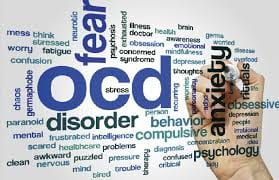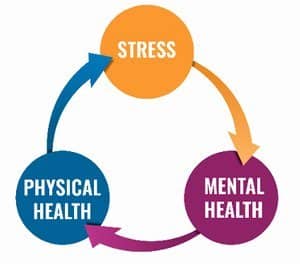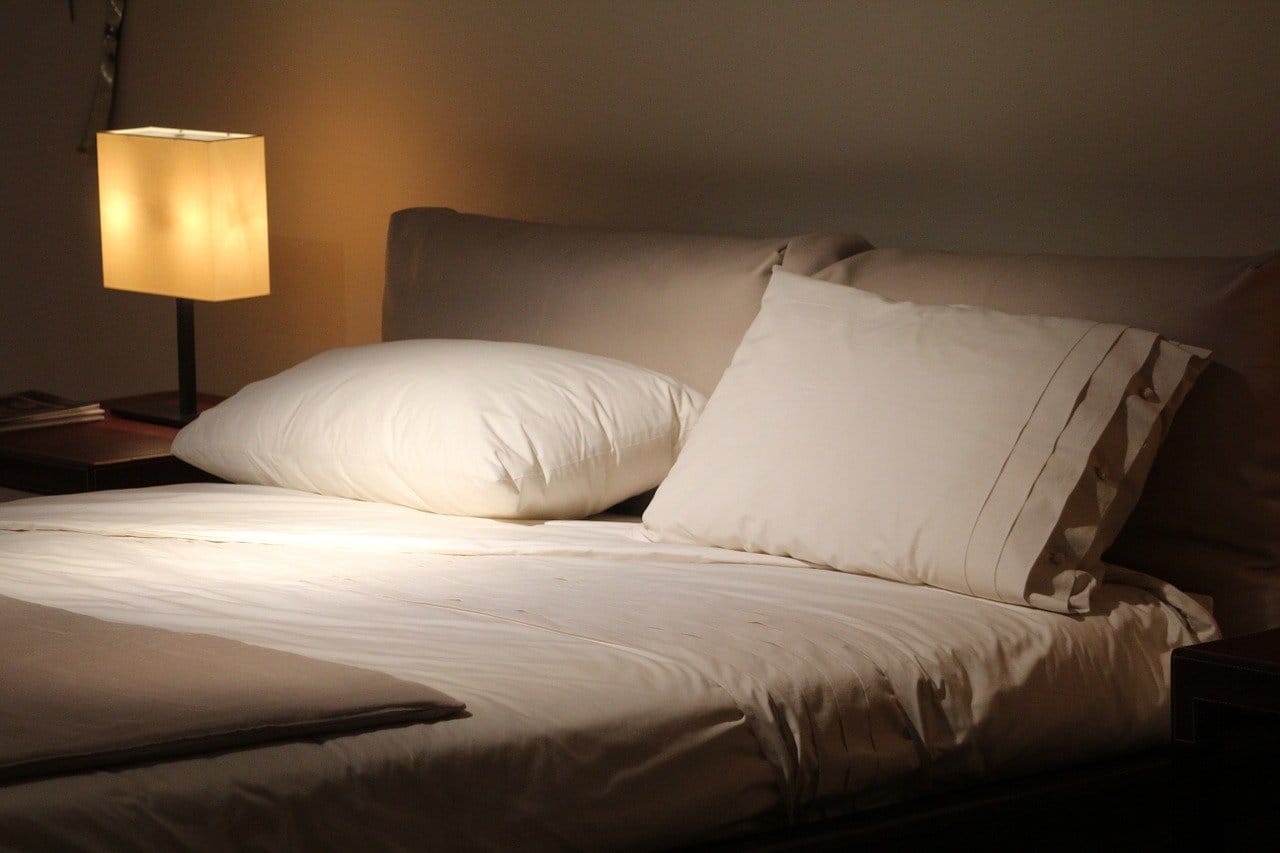Obsessive-Compulsive Disorder, OCD, is an anxiety disorder and is characterised by recurrent, unwanted thoughts (obsessions) and/or repetitive behaviours (compulsions). Repetitive behaviours such as hand washing, counting, checking, or cleaning are often performed with the hope of preventing obsessive thoughts or making them go away. Performing these so-called “rituals,” however, provides only temporary relief, and not performing them markedly increases anxiety.
Who is affected?
It’s estimated around 12 in every 1,000 people in the UK are affected by the condition. This equates to almost 750,000 people.
OCD affects men, women and children. The condition typically first starts to significantly interfere with a person’s life during early adulthood and continues if left untreated. Problems though can develop at any age.
There are different types of OCD compulsions, which include:
- Washing: Repeatedly washing or cleaning, often of the hands. This compulsion is often related to contamination obsessions.
- Checking: Repeatedly checking to make sure a task was performed, such as locking the door or turning off the oven. This compulsion is often related to obsessions about doubts.
- Ordering: Repeatedly putting things in a particular order or requiring that things have a certain symmetry. This compulsion is often related to obsessions about order and control.
- Counting: Repeatedly counting things to reduce anxiety (e.g., floor tiles, cars in the parking lot, numbers in general). This compulsion may be related to obsessions about violence or other horrific thoughts. The individual may believe that if they count all of the items or count to a predetermined number for every thought, it will prevent the obsession from coming true.
- Repeating Actions: Repeatedly performing a specific behaviour in order to counteract the obsession. For example, a person who has obsessions about doing something inappropriate in school may tap their desk repeatedly in an attempt to prevent the obsession from coming true.
- Asking for Reassurance: Repeatedly asking others for reassurance that everything is okay or that they performed some task (e.g., turning off the oven). This compulsion often accompanies obsessions about doubts.
What Causes OCD?
Everyone experiences intrusive, random, and strange thoughts. Most people are able to dismiss them from consciousness and move on. But these random thoughts get “stuck” in the brains of individuals with OCD; they’re like the brain’s junk mail. Most people have a spam filter and can simply ignore incoming junk mail. But having OCD is like having a spam filter that has stopped working – the junk mail just keeps coming, and it won’t stop. Soon, the amount of junk mail exceeds the important mail, and the person with OCD becomes overwhelmed. So why does the brain of individuals with OCD work this way? In other words, what causes OCD?
Although it has been established that OCD has a neurobiological basis, research has been unable to point to any definitive cause or causes of OCD. It is believed that OCD likely is the result of a combination of neurobiological, genetic, behavioural, cognitive, and environmental factors that trigger the disorder in a specific individual at a particular point in time.
-
Autoimmune Causes:
A rare form of OCD dubbed the “PANDAS” (Paediatric Autoimmune Neuropsychiatric Disorders Association with Streptococcal infections) is often caused due to an infection of the same bacteria that causes strep throat & scarlet cancer. The body’s immune system gets confused and starts attacking basal ganglia (a particular brain area) that results in OCD.
-
Behavioural Causes
: If you know someone who suffers from OCD, you will notice that they often associate particular objects/circumstances with fear and start avoiding them as much as possible. The fear is closely seen in cases when they’re experiencing intense stress or have just ended a bad relationship. Avoiding the object seems more feasible to them rather than confronting the fear.
-
Imbalance in Brain Structure:
Imbalance in the chemical serotonin in the brain may be contributing to the development of OCD. Also, certain chromosome or gene deviation possibly doubles the probability of developing OCD in an individual.
Family History:
Another cause of OCD could be genetic and heredity factor. One considered is inheriting the disorder from somebody on the family line. Research and studies carried out among teenagers in India showed that around 30% turned out to have immediate families affected with OCD. Also children with parents suffering from OCD are prone to having it by around 8% chances. However, the possibility of OCD to be genetically inherited is still not conclusive.
-
Reinforcement:
Negative reinforcement can lead to Obsessive compulsive disorder making compulsive patterns stable. Individuals indulge in compulsive activities because these activities reduce their mental anxieties.
-
Environmental Causes of OCD:
According to the research, if you or someone in your vicinity have undergone TBI (Traumatic Brain Injury), their chances of suffering from OCD are higher. Even environmental stressors of either of the 4 types (cataclysmic, stressful life events, daily troubles, and ambient stressors) are known to trigger OCD in an individual. These are some of the prominent environmental causes of OCD.
Social factors along with a combination of stressful life events like illness, abuse, death of a loved one, closure to a bad relationship, and other traumatic life events are additional factors that can contribute to the development of OCD.
Regardless of the type of OCD a person may be suffering with, the following three components are generally present, triggers, avoidance, and reassurance, but what do they all mean?
What’s a trigger?
Tons of things happen to us throughout the day. Certain things we barely even notice, while others make us feel happy, angry, sad, or however else. A trigger is one of those things in our environment (or sometimes in our own minds) that cause us to experience a certain thought or to feel a certain way. For instance, if you’re recovering from the grief of losing a loved one and you begin to feel sad when you hear their favourite song on the radio, that song is the trigger for your emotional state. A trigger could be a casual remark someone has said to you or something you heard on the TV. It could be an impending stressful event that triggers your OCD; the reasons are many.
This trigger doesn’t exactly cause the feeling, because there are other things contributing to this process (like the way you already felt, or the thoughts that might come in between the trigger and the feeling), but it’s still the trigger in that moment. It’s important to note that the trigger is not always easy to identify. Sometimes you might have a lot of unpleasant thoughts and feelings for seemingly no reason at all.
Avoidance
Avoidance is a common compulsive behaviour and is where a person with OCD avoids the objects, places, or person/people that they feel trigger their OCD. This will be their way of preventing the distress and anguish, and the hours of rituals they will be compelled to perform.
- Avoidance only serves to increase the power of OCD. When you engage in rituals, you do so to avoid feelings of discomfort or anxiety, but this keeps you hostage to your OCD. In addition, OCD can also boss people around and tell them not to go places or do things, in other words, to avoid doing things, because it’s dangerous. It can take a lot of courage, but by engaging in exposure and response prevention ERP exercises and reducing and eliminating your dependence on rituals, you can learn first-hand that you can tolerate discomfort and anxiety better than you expected. As well, rather than reducing your life to a small circle of “approved” activities, starting going places and doing things OCD has previously forbidden. Avoid Avoiding!!
Reassurance
Compulsions are physical or mental behaviours that OCD sufferers engage in to gain certainty about a fear or to feel less anxiety, guilt, and shame. ‘Reassurance-seeking’ is one of the most common types of compulsive behaviours that occur in response to OCD about real life events, that is, if you are brave enough to ask someone. This normally comes in the form of asking for reassurance about how bad your actions were.
With ‘reassurance seeking,’ the OCD sufferer will have an urgent need to know for sure how others perceive the incident in hopes they can let it go. You may ask the same person a million different ways until they are about to kill you, or you may survey 100 of your dearest friends and compare results. You may find yourself doing extensive Internet research looking for reassurance that ultimately leads you into a bigger hole of despair.
Mental rituals are compulsions performed mentally to gain certainty about the level of terribleness of your actions. Probably the most common type of mental ritual in real life event OCD is ‘mental review.’ You will find yourself replaying the life situation and what likely happened, what should have happened, and what a ‘good’ person would have done. You may say things like, “What would I have done if this one factor changed?” and “How would others view what I have done?”
‘Self-punishment’ is another typical mental ritual that serves to absolve some of the massive guilt the sufferer is experiencing about the incident. If you feel you have done something awful, it may make you feel better to punish yourself as uncomfortable as this process may be. You don’t want to feel as if you got away with the horrible event. The punishment doesn’t fit the crime, however. Ask yourself if your incident calls for a life sentence.
Main treatments for OCD
Cognitive Behavioural Therapy
CBT is the most widely used therapy for anxiety disorders. Research has found it to be effective in treating OCD, GAD, phobias, and panic disorders, among other conditions.
The premise of CBT is that your thoughts—not your current situation—affect how you feel and subsequently behave. So, the goal of CBT is to identify and understand your negative thinking and ineffective behaviour patterns and replace them with more realistic thoughts and effective actions and coping mechanisms.
During this process, the professional working with you acts like a coach teaching you helpful strategies. For example, you might do a lot of “black-and-white” thinking, where you assume that things are all bad or all good. Instead, you would replace those thoughts with the more realistic perception that there are many shades of grey in between.
It takes practice to use these strategies. Once you start to recognize your anxiety and your triggers, you can learn to apply the coping skills that you learn in CBT to manage fear, panic, and worry.
Exposure therapy
The therapy of choice for the treatment of OCD is exposure and response prevention (ERP), which is a form of CBT. In ERP therapy, people who have OCD are placed in situations where they are gradually exposed to their obsessions and asked not to perform the compulsions that usually ease their anxiety and distress. This is done at your pace; your therapist/coach should never force you to do anything that you do not want to do.
The first step is for you to describe all of your obsessions and compulsions. Then you and the therapist will arrange them in a list, ordering them from things that don’t bother you much to things that are the most frightening. Next, the therapist will ask you to face your fear of something on your list, starting with the easiest. Let’s say you have an obsessive fear of germs in public places, and that fear is pretty low in how much it scares you. Your therapist will design a task for you that exposes you to that fear. Your task might for you to touch a public doorknob. Here’s where the response-prevention part comes in. If your usual response is to wash your hands immediately after touching the doorknob, the therapist would ask you to wait before you wash your hands. As you repeat this exposure task, the therapist will ask you to wait longer and longer before washing your hands. Over time, this gradual exposure and delayed response would help you learn to control your fear of germs in public places without washing your hands.
It may seem weird, but this new way of confronting your fears directly will lead to fewer and less intense fears or obsessions about germs. Your brain learns that nothing bad happens when you stop performing compulsive rituals.
You’d probably feel very upset when you first touched the doorknob — maybe even feel a little panicked. But the body has a wonderful capacity for something called habituation, and anxiety will eventually lessen without doing anything but letting time pass. It’s something like jumping into a pool of cold water. When you jump in, the water may feel very cold. But after a while, your body gets used to the cold, thanks to habituation, and you feel fine.
When your therapist helps you with exposures over a period of time, your anxiety shrinks until it is barely noticeable or even fades entirely. The therapist can then help you gain confidence and learn special skills to control the compulsions through a cognitive therapy.
9 Self Help Tips to Improve OCD Symptoms
1. Acceptance of OCD
The first step in managing OCD is to accept that your anxiety or negative thoughts are caused by OCD.
Identifying thoughts that creep in as anxiety or OCD will stop you from thinking that they are real. Thoughts that stem from anxiety or OCD can make us feel as though we (or others) are in danger, when in fact there is no real danger at all.
2. Identify OCD Triggers
To manage the symptoms, it’s necessary to identify situations that trigger your OCD.
By becoming aware of your OCD triggers, you can begin to manage the negative behaviour that results.
Try writing down everything that creates an urge to act out a compulsive action for a week or two. Then you can use this information to help you to take steps to refocus or lengthen the time between the triggers or urges and the compulsion.
3. Refocus
When regular triggers cause you to feel the urge to carry out an obsessive or compulsive activity, practice refocusing your thoughts and energy.
Changing the scene by deciding to do something else instead of the compulsive action will help delay the urge and change your response to the trigger.
4. Don’t Push Down Thoughts
Pushing down thoughts or arguing with them can cause them to persist or even get worse.
Instead, observe your thoughts, make note of them, and gently shift your focus away from them to move on.
Don’t try to rationalize them as they are not real, and instead, are simply manifestations
Meditation and mindfulness are tools used in cognitive therapies to keep the mind focused and can help with managing your thoughts.
5. Keep a Journal
Keeping a journal of your obsessions can help you to get to know your OCD better.
Try writing your obsessions, compulsions and triggers down in a journal each day whenever possible. This can give you better insights into your OCD signs and symptoms.
You can keep a notebook with you to write episodes down as soon as they happen to jot down precise information about the experience you had while it’s still fresh in your mind.
6. Face Your Fears
By leaning into your OCD and the triggers that lead to compulsions, you can learn to manage it. Avoiding the symptoms of OCD will only make them worse.
Set some time aside each day to focus on your obsessions and compulsions. Review your journal and notice what you have been worrying about and how you have managed it.
By setting time aside you can free up the rest of your day, safe in the knowledge that you can address the issues later.
7. Accept the Gray Areas
It is easy to blame yourself for carrying out an obsessive thought or action. If you fall into old habits, accept it and move on.
You’ll have many more chances to get it right in due time. If you find yourself carrying out a compulsion, take note of the experience but don’t dwell on it.
8. Relaxation and Self-care
Set 30 minutes aside every day devoted to relaxation and self-care. Meditation and yoga are great ways to relax the nervous system and reduce stress.
Stress itself doesn’t cause OCD but it can make the symptoms worse or trigger an episode. Reducing stress in your life is one of the best ways to effectively manage your OCD.
9. Congratulate Yourself
Taking steps toward your recovery isn’t easy, so congratulate yourself every day for not only working on improving your symptoms but also for sticking with it.
Take note of the little wins in your journey and be proud of your efforts. It is important to measure and celebrate your successes to keep up the motivation and progress with your healing journey.
Thanks for taking the time to read and I really hope you found this information useful and interesting. If you would like to chat further about this or how coaching can help you then please do contact us, and we’ll do everything we can to help you.






